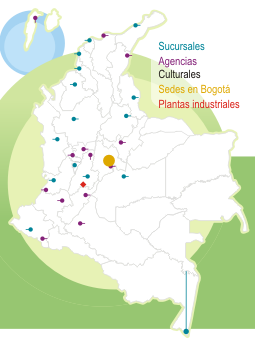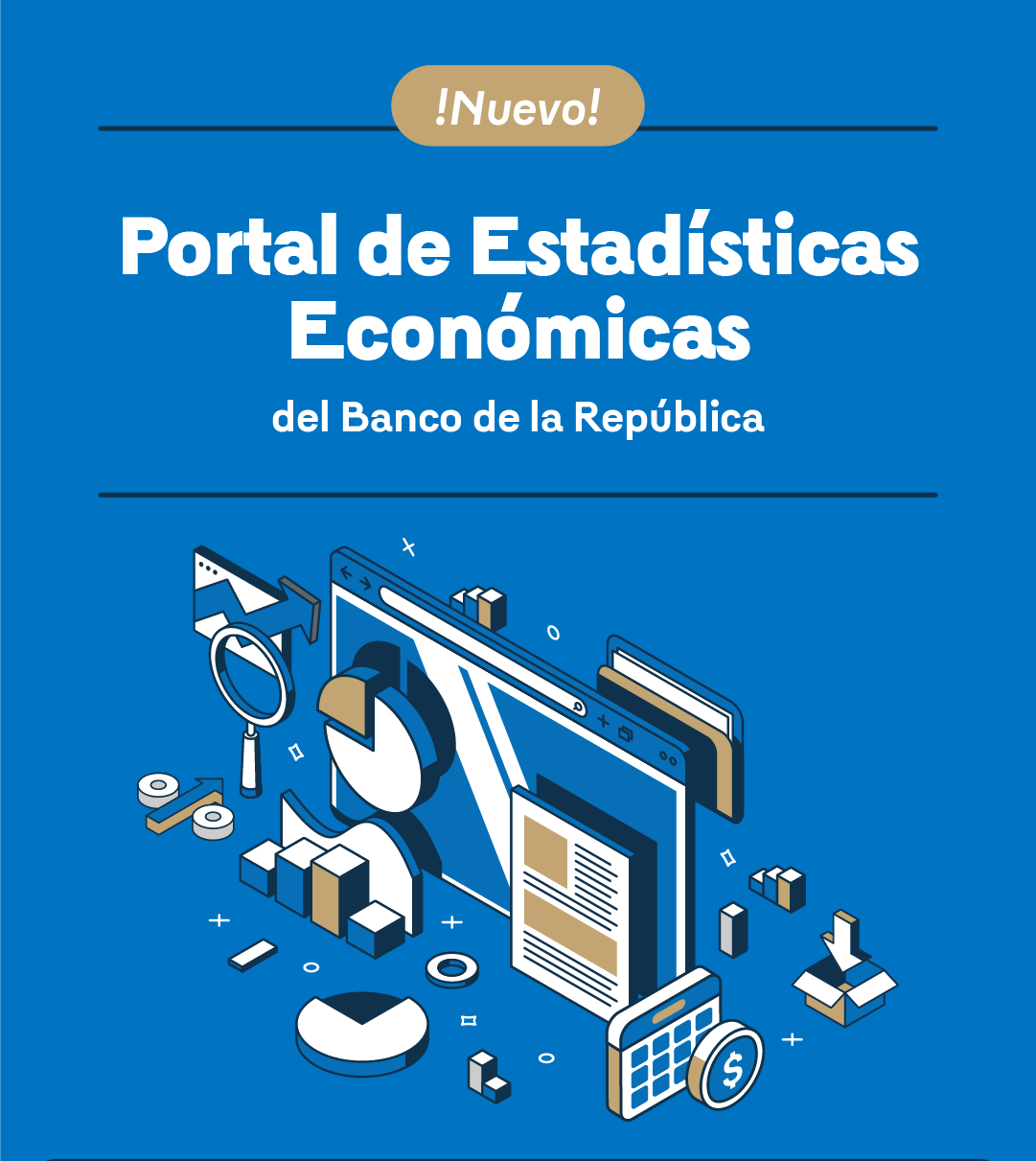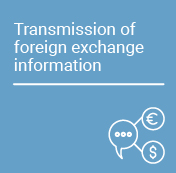Speech by the Governor before attendees of the XVIII Asofondos Congress
These documents are of an informative and academic nature. Opinions and possible errors are the sole responsibility of the author(s) and their contents are not binding on Banco de la República or its Board of Directors.
Cartagena,
- Good morning to all Asofondos Congress attendees. I extend a special greeting to my esteemed fellow panelists in this opening session: Mr. Juan David Correa, President of the Board of Directors of the Association; the Minister of Labor, Mr. Antonio Sanguino; and the Financial Superintendent, Mr. César Ferrari.
- I would also like to express my sincere appreciation to Andrés Velasco and Daniel Wills, President and Technical Vice-President of Asofondos, respectively, as well as to all the members of the Association, for their kind invitation and the opportunity to participate in this vital forum.
- On this occasion, I will first share Banco de la República's perspective on Colombia's macroeconomic and monetary outlook. Additionally, I will conclude my remarks with reflections on the Bank's role in administering the Contributory Pillar Savings Fund, established by the Congress of the Republic as part of the pension reform approved last year.
- It is important to clarify that the views I will present today do not necessarily reflect the position of the Bank's Board of Directors, nor do they represent the opinions of its individual members, who may hold differing interpretations on some issues I will address.
On the Bank's autonomy and essential objectives
- I would like to begin by addressing recent allegations directed at the Board of Directors, particularly some of its members, regarding alleged political motivations behind the decision made on Monday, March 31 to keep interest rates unchanged. My response to these claims is a strong reaffirmation of the institutional integrity of the Board, which operates strictly on technical grounds and within the clear constitutional mandate of safeguarding the purchasing power of the peso in tandem with general economic policy.
- It is essential to emphasize that none of the Board Members, except for the Minister of Finance, represent any particular government or political opposition. The Constitution is unequivocal on this matter. Article 372 explicitly states: "The members of the Board of Directors shall exclusively represent the interests of the Nation."
- I have had the distinct honor of serving as member of the Board of Directors of Banco de la República for the past twelve years and, more recently, for over four years as Governor. I can state with absolute clarity and conviction that throughout these sixteen years, I have never witnessed any Board Member—or the Board as an institution—act with any motivation other than pursuing what is best for the country and its people. Our sole objective has always been to fulfill the constitutional mandate of preserving the purchasing power of the peso while ensuring that this goal aligns with the highest possible level of sustainable economic growth and employment.
- In this endeavor, the Board has been fortunate to rely on what I consider to be the most highly qualified team of economists in the country. Every decision the Board makes is preceded by a comprehensive recommendation document prepared by this technical staff. While these recommendations are not necessarily adopted in full, they serve as a crucial point of reference, providing the strongest available evidence to guide Board Members in making informed decisions. Ultimately, each vote is cast with the highest level of diligence, in adherence to the constitutional mandate, and with an unwavering commitment to the nation's best interests.
- Over the past 25 years, throughout this century, the Board has implemented its mandate to preserve the currency's purchasing power through an inflation-targeting strategy. This approach seeks to maintain inflation at approximately 3%, with a flexible exchange rate and a very short-term interest rate as the primary policy instrument.
- When inflation exceeds the target, it becomes necessary to uphold a contractionary monetary policy to bring it back under control. However, the short-term economic cost of such a policy—reflected in reduced productive activity—can be more pronounced and prolonged under certain conditions. This occurs, for instance, when prices and wages are heavily indexed to past inflation. Similarly, factors that elevate country risk premiums—such as global uncertainty or political idiosyncrasies, such as rising public debt or fiscal deficits exceeding expectations—can further complicate monetary policy efforts.
- Under these circumstances, the burden on monetary policy intensifies as it seeks to steer inflation back to its target while restoring the conditions necessary for more substantial and sustainable economic growth in the medium and long term.
Colombia's< recent adjustment process: a success story
- The high policy interest rates maintained over the past three years reflect a deliberately restrictive monetary policy necessary in response to a significant inflationary shock—one that affected most economies worldwide between 2021 and 2023. Our policy response, characterized by elevated interest rates, entailed notable short-term costs regarding its impact on aggregate demand and productive activity. However, these costs were considerably lower than many had anticipated. Contrary to some forecasts, the economy did not enter a recession, and the observed slowdown in productive activity did not hinder the current unemployment rate from standing below pre-pandemic levels.
- Concurrently, this restrictive monetary policy effectively contributed to a substantial reduction in inflation—more than eight percentage points—bringing it down from its peak of 13.4% to the current level of 5.3%. Additionally, the domestic demand imbalances that had manifested in a current account deficit exceeding 6% of GDP in 2022 were significantly corrected, reducing the deficit to just 1.8% of GDP by 2024. The technical staff now projects that this deficit will rise slightly to 2.4% of GDP in 2025, reflecting clear signs of recovery in domestic demand. Even so, the projected deficit remains well below its level three years ago, leaving the economy less reliant on external financing and less vulnerable to abrupt changes in domestic and international conditions—an especially important factor given our current uncertainties.
- I believe that this macroeconomic adjustment process has been successful. It is particularly noteworthy that, within this context, we are witnessing an evident recovery in economic activity. Growth is expected to reach 2.8% in 2025, a rate that compares favorably with forecasts for many regional economies and more advanced economies, including the United States and several European nations.
- According to data from the National Administrative Department of Statistics (DANE), domestic demand grew by 4.4% in real terms in the last quarter of 2024. Similar growth rates are expected in 2025, providing the foundation for the projected recovery in GDP. This improvement is also reflected in labor market indicators, including the seasonally adjusted unemployment rate recorded last February, which was the lowest for any month since April 2017.
- Undoubtedly, the reduction in policy interest rates implemented by this Board between December 2023 and December 2024 played a key role in supporting the recovery of domestic demand, productive activity, and employment.
Why do interest rates remain relatively high?
- At this point, it is essential to emphasize that our monetary policy interest rates remain at levels indicative of a contractionary monetary stance. Both nominal and real interest rates are currently higher than what the Bank's technical staff considers neutral and desirable in the medium and long term—conditions in which inflationary pressures are absent and the economy grows close to its potential rate.
- In this context, I would like to reiterate a point I have made publicly on multiple occasions: I consider that interest rates lower than those currently in place would be desirable. Moreover, I am convinced that there is consensus among all members of the Bank's Board of Directors on this matter.
- Why do we maintain interest rates that we deem contractionary and higher than what would be ideal in the medium and long term? The reason is that, despite our success in significantly reducing inflation from its peak in March 2023, the pace of disinflation in Colombia has been slower than in many other countries in the region and around the world, where inflation has already returned to the target ranges set by their central banks. This slower adjustment is primarily due to the high degree of price and wage indexation in Colombia and other idiosyncratic and circumstantial factors that have complicated the disinflation process.
- Furthermore, the process of lowering interest rates—which we all wish to continue—had to be temporarily halted during the last two Board meetings in January and March. This decision was driven by a slowdown in the pace of inflation's convergence toward the target, alongside factors that exerted upward pressure on inflation expectations and international interest rates relevant to Colombia's external financing. Notably, the rise in long-term interest rates in global markets coincided with an increase in Colombia's country risk spreads. The latter occurred in a context where fiscal deficit figures significantly exceeded forecasts, and public debt as a percentage of GDP was rising at a rate well above what is consistent with macroeconomic stability.
- When comparing Colombia with other Latin American countries that, like us, follow a target inflation strategy, we observe that nations such as Perú, Uruguay, Paraguay/span>, and Costa Rica have made greater progress in reducing interest rates. This has been possible because inflation in these countries has already returned to the target ranges established by their respective central banks. In the case of Chile, inflation remains slightly above its target range due to specific factors related to public utility tariffs. However, inflation expectations suggest that by the end of 2025, Chile will be very close to its target of 3%—the same target set by Colombia.
- The experiences of the region's two largest economies, México and Brazil, are particularly relevant to our analysis. In México, inflation currently stands at 3.7%, within the target range of 3% ± 1 percentage point. This allowed the Mexican Central Bank to lower its monetary policy interest rate last week from 9.5% to 9%. It is worth noting, however, that even after this reduction, the real ex-post policy rate (the difference between the nominal rate and observed inflation) remains at 5.3% (9% - 3.7%), significantly higher than Colombia's current level of 4.2% (9.5% - 5.3%).
- The case of Brazil is particularly striking and serves as an important reference for the risks Colombia faces. Inflation in Brazil is currently at 5.1%, slightly lower than in Colombia. The Brazilian Central Bank had been making steady progress in lowering its monetary policy interest rate, reducing it from 13.75% in August 2023 (slightly above Colombia's at the time) to 10.5% by mid-2024. However, concerns over the country's fiscal situation in the latter half of 2024 led to a sharp depreciation of the real and rising inflation expectations. In response, the Central Bank was forced to rapidly reverse course, raising the policy rate from 10.5% to its current level of 14.25%. In real ex-post terms, this rate is nearly five percentage points higher than Colombia's. Additionally, the Brazilian Central Bank has signaled to markets that further rate hikes may be necessary in the coming months. Fortunately, Colombia has not faced such a scenario recently, and clearly, avoiding such a situation remains a priority.
- In Colombia, inflation remains above the 3% target set by the Central Bank. The technical staff's central forecast for year-end 2025 places inflation above the tolerance range of ±1 percentage point around the target, as announced by the Board last November. If this projection materializes, 2025 would mark the fifth consecutive year in which the inflation target is not met. This would pose a challenge to the credibility of the inflation-targeting framework, which relies on the firm anchoring of inflation expectations as a key element of its effectiveness. Unfortunately, recent analysts' surveys suggest that inflation expectations among many economic agents have risen in recent months and remain above the target level.
- The combination of deteriorating inflation expectations, fiscal risks in Colombia, and uncertainty surrounding the global economy—exacerbated by the trade tensions triggered by the United States—led the majority of the Board to decide last Monday to maintain the pause in the process of reducing the policy interest rate. As stated in the press release following that meeting: "The decision to maintain the interest rate unchanged reflects a cautious approach to monetary policy, anticipating new information in the coming months that will provide further evidence on the feasibility of additional rate cuts. This decision reaffirms the Board's commitment to achieving convergence with the inflation target in the context of recovering economic growth." I believe this statement clearly conveys our expectations moving forward.
The role of Banco de la República in administering the pension system's Contributory Pillar Savings Fund
- Before concluding, I would like to address the role that Banco de la República will play in administering the pension systems' Contributory Pillar Savings Fund (FAPC), as established by the reform approved last year by Congress.
- As you know, Law 2381 of 2024 stipulates that, within the contributory pillar, pension contributions from all workers will include an average premium component administered by Colpensiones, covering contributions on incomes between 1 and 2.3 times the legal monthly minimum wage. Since a portion of these contributions currently goes to the individual savings component, this change will significantly increase the resources received by Colpensiones once the reform takes effect. However, in the long term, this situation will reverse, as Colpensiones' pension obligations will eventually surpass the resources it collects.
- To address this, the law mandates that the temporary surplus of funds received by Colpensiones—expected to last for two or three decades—be allocated to the Contributory Pillar Savings Fund (FAPC). Congress also determined that Banco de la República would be responsible for administering this Fund. The resources administered through the FAPC will be channeled into capital markets via professional asset managers, generating returns that will help the government meet future pension obligations.
- Currently, even before the reform is enacted, Colpensiones operates with a significant deficit, requiring substantial transfers from the national government. These transfers are included in the annual national budget and contribute to the fiscal deficit. The creation of the FAPC, administered by Banco de la República, has been structured to ensure that its funding is adjusted in a way that neither affects the national government's current pension expenditures nor undermines aggregate savings in the economy.
- It is essential to underscore that the temporary surplus of resources allocated to the FAPC will be insufficient to meet future pension obligations. According to the projections outlined in the bill, the Fund is expected to be fully depleted by 2070, at which point the government will need to allocate additional resources to cover the resulting deficit. Ensuring the long-term sustainability of the pension system will likely require adjustments to key parameters, particularly in retirement ages and contribution rates. The necessity of these reforms remains unchanged and is in no way diminished by Banco de la República's role as a financial resource manager.
- A little over a month and a half ago, on February 13, I addressed this very auditorium during the Treasury Congress of the Banking Association, stressing the urgency of issuing the government decree regulating the FAPC's operation. I noted that without the prompt issuance of this decree, it would be impossible to establish the fundamental elements necessary to begin administering the Fund on time, as mandated by law for July 1.
- Banco de la República's team worked intensively and constructively with officials from the Ministry of Finance and the Financial Regulation Unit (URF) throughout the last months of 2024, expecting that by year-end, the decree would be in place, allowing us to begin developing the institutional and financial framework required for the Fund's timely launch. Unfortunately, the process has been significantly delayed. In late February, a version of the decree was released for public consultation, which contained multiple provisions that had not been previously disclosed to the Bank, some of which were inconsistent with the law. Consequently, we submitted a detailed letter on March 7 highlighting our many concerns. Fortunately, several of these observations were taken into account by the Ministry of Finance and the URF, for which we are grateful. A revised draft was published for further comments last Friday, March 28. However, as of yesterday, we had to submit another letter reiterating key concerns that had not yet been addressed, raising the possibility that the decree's issuance could be further delayed or that it may not fully resolve our outstanding issues. I mention these dates to convey the pressing urgency we currently face in securing the regulatory framework needed to fulfill our legal mandate, which takes effect in less than three months.
- Only once the regulatory decree is issued can we move forward with drafting and signing the FAPC administration contract between the government and the Bank. This will allow us to initiate the selection and hiring of the first administering entities responsible for overseeing the resources, which are expected to accumulate at a rate of approximately 1.4 trillion pesos per month starting July 1. Among many other matters, the contract must explicitly establish that Banco de la República will administer the FAPC's resources in its capacity as the government's fiscal agent, as it does with other funds. It will provide the necessary technical and operational infrastructure while ensuring a strict separation between the Fund's resources and the Bank's own, both in budgetary and accounting terms. Furthermore, the administration of these resources will adhere to principles of prudence and diligence, as is standard in fiduciary mandates, with responsibility over the means rather than specific financial outcomes.
- The law establishes a Steering Committee as the highest authority of the FAPC, composed of three government representatives and four independent experts appointed by the Board of Directors of Banco de la República. However, the selection process for these four experts can only begin once the corresponding regulatory decree is in place. The draft decree published for public observations last Friday incorporated the Bank's proposal for a transition period, during which the Bank could operate under provisional rules, investing resources in moderate-risk portfolios similar to those currently administered by the AFPs. Nonetheless, the challenge of establishing these delegated portfolios within such a short timeframe remains considerable.
Several regulatory elements still require definition. In particular, I want to highlight three pressing issues.
- First, a provision included in the latest draft of the decree must be revised, as it allows for the use of savings accumulated in the FAPC to make payments under the contributory and semi-contributory pension frameworks. This pertains to the decumulation of the Fund, which should be explicitly regulated in a separate decree concerning generational sub-accounts—an essential regulation that is still pending. The law stipulates that this decree must undergo review and include a binding opinion from the Fund's Steering Committee, which has not yet been established. Consequently, incorporating mechanisms for decumulating the Fund's resources in the decree currently under discussion would not only be premature but also contrary to the law.
- For Banco de la República, as administrator of the FAPC, it is essential to clarify which Government entity will be responsible for the Fund's accounting and which will oversee the corresponding auditing functions. After the bill was approved in the Senate and debated in the House of Representatives, the Bank highlighted the need for such clarity. While many House and government representatives showed willingness to make the necessary adjustments, procedural constraints in the legislative process prevented them. Given these circumstances, the government must define these key accounting and resource oversight aspects through a regulatory decree.
- Regarding hiring delegated administrators during the transition period, it is imperative that government regulations establish clear limits on their remuneration in strict accordance with the law. Specifically, compensation should be structured as a fee based on the balance administered rather than as a percentage of the base income for contributions, as proposed in the version published last Friday. The latter approach is inapplicable for resources that do not correspond to individual contributions. Additionally, certain sections of the draft decree contain inconsistencies regarding the nature of the FAPC, treating it as if it were a savings fund for individual contributions—an interpretation that does not align with its legal framework.
Banco de la República remains fully committed to collaborating with all relevant stakeholders to ensure a coordinated and efficient implementation of the new pension system and the successful launch of the Contributory Pillar Savings Fund. However, I must reiterate the urgency of establishing adequate regulations, without which we simply will not be able to fulfill the mandate assigned to us by law.
Thank you very much.

































































